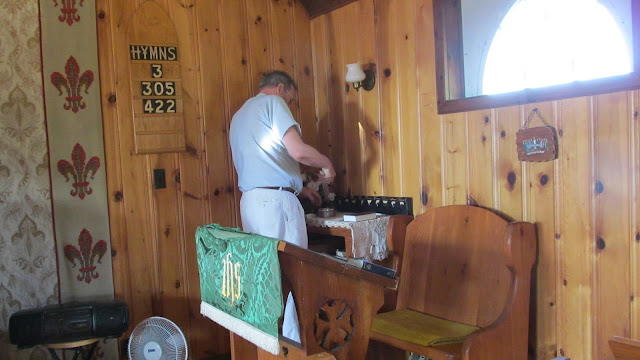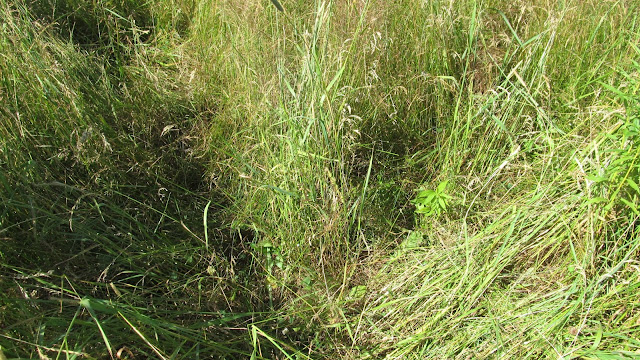Several things struck me as I have since thought about the performance. One was the motif of wounding. What interplay of metaphor and reality—being pierced by Cupid’s arrow as if slain or being fatally slashed by a real rapier. Love is like being struck to the core by a surprising transformative creative reality; hate and conflict can result in death which is real and literal. The two uses of language culminate in Juliet’s suicide when she falls on none other than Romeo’s dagger. Her love for Romeo literally kills her. I feel I am not expressing this concept very well, but I’m trying. My metaphorical development stalled at about age three. However, Marion Woodman's has not; on p. 24 of The Ravaged Bridegroom, she says metaphor yokes together matter and spirit "without bloodshed." There is a huge difference between self-murder and Self-sacrifice, which, tragically, Juliet and Romeo do not understand.
Another thing I noticed was everyone’s noting Juliet’s youthfulness. Sara Topham’s portrayal of the thirteen year-old Juliet was somewhat on the histrionic side at times (much arm flinging), but then some adolescent girls tend to be like this. In any event, I concluded the play should be more about her than anyone else. This was not something I had considered before. Of course the last line suggests this: a story about “Juliet and her Romeo.” The inverted order of the names may not have been intended only to make the last line rhyme with “woe.” Perhaps Shakespeare wanted to emphasize what Juliet represented in the unruled hyper-masculine society depicted in this play.
Juliet is so much like Miranda in Shakespeare’s late comedy, The Tempest —very young and completely innocent of the ways of the world, both the personal world and the public sphere. Unlike Miranda who has a wise father and a suitor willing to undergo challenges to win her, Juliet has parents who are horrible to her, and she lives in a society which is torn apart by testosterone gone wild. Juliet’s fate is practically a foregone conclusion.
In thinking about the contrast between the destructive masculine and the neglected feminine, one line stood out for me: Romeo, played by Daniel Briere, criticizes himself for letting love make him effeminate. He soon displays the same savage vengeful behaviour as his peers and by the end of the play is a double murderer. If I had cast (or directed) Romeo, I would have preferred a slightly more worldly-wise youth at the beginning; after all, his gang buddies have been his friends for a long time. He knows his world and is only temporarily thrown askew by love, first for Rosaline, then for Juliet.
Psychologically he is like a lot of teenage boys who are so overwhelmed by their first experience of falling in love that they draw back. Alas, in the world Romeo inhabits, this regression involves participating in blood feuds of which no one can remember the origin. And this is the natural world for him. He should be depicted a somewhat more cynical lurking character when he first sets eyes on Juliet.
Romeo is caught between the two worlds — the machismo of the blood feud and the better angel of his nature, symbolized for him by Juliet. But unlike Ferdinand in The Tempest, he does not undergo trials to prove his worth to his beloved or to her father. He swings between the opposite poles of self-annihilation and annihilation of others. Not only that, one wonders whether, once he gets over his infatuation with Juliet, will she just be cast aside like Rosaline?
And Juliet, who, unlike Romeo, is not experienced in love will suffer that loss eventually. In this she reminds me of Ophelia — another Shakespearean heroine left to twist in the wind by her beloved and by her father. In trying to understand his murderous behaviour and to rationalize it, Juliet twists logic and concludes he had to kill Tybalt or Tybalt would have killed him. She can then continue to idolize Romeo.
So what was Shakespeare trying to say in this play? It is a commentary on the futility of hatred and vengefulness (it was Shakespeare’s next play after the bloody Titus Andronicus), but it is also a coming of age story about a young girl. Unlike the characters in A Midsummer Night’s Dream, who wake up out of the spell cast by the complex of love and then love more sensibly, Juliet lives (and dies) in unthinking adoration of Romeo.
The play was so much darker than I remembered — despite the house lights being turned on for the whole performance owing to Original Practices staging. My immediate response is that being wife to Romeo could eventually be like being married to Tony Soprano.
Mind you, one should re-check one’s initial impressions, so back to the text I shall go. I have put re-reading Romeo and Juliet on my Read This list.





















































